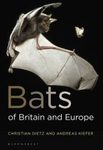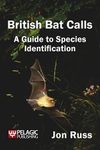Flora / Fauna Report Red Data Book Journal / Magazine
By: Christine Harbusch(Author), Edmée Engel(Author), Jacques B Pir(Author)
156 pages, 48 colour photos, colour illustrations, b/w distribution maps, and colour & b/w maps; 5 tables
![Ferrantia, Volume 33: Die Fledermäuse Luxemburgs (Mammalia: Chiroptera) [The Bats of Luxembourg] Ferrantia, Volume 33: Die Fledermäuse Luxemburgs (Mammalia: Chiroptera) [The Bats of Luxembourg]]()
Click to have a closer look
About this book
Customer reviews
Related titles
About this book
Language: German, with trilingual abstract in English, French and German
The present study is the result of a long-term inventory by voluntary bat workers and a six-year study of the first author on behalf of the National Museum of Natural History of Luxembourg. Many data were collected at the Museum through reports of roosts or dead specimens. Furthermore, historic data from the literature and museum collections were evaluated. From 1991 to 1996 the summer distribution (mid-April until mid-October) of bats was investigated, using ultrasound detectors, summer roost checks and mist-netting. This inventory was conducted on the entire national territory (2586 km2) on a 5 × 5 km grid with 2 to 3 observation points per grid.
Summer roost checks were undertaken in 213 church lots and further buildings. Mist netting was carried out mainly in late summer and autumn in front of underground habitats. This method additionally allowed the discovery of several bat species difficult to hear and to identify by detector. The importance of some underground habitats as swarming and mating places was established. One hundred and twenty winter roosts were checked by scientific collaborators of the Museum. As a result of these studies, 19 bat species were identified in Luxembourg: Rhinolophus ferrumequinum, R. hipposideros, Myotis daubentonii, M. mystacinus, M. brandtii, M. emarginatus, M. nattereri, M. bechsteinii, M. myotis, Nyctalus noctula, N. leisleri, Eptesicus serotinus, E. nilssonii, Vespertilio murinus, Pipistrellus pipistrellus, P. nathusii, Plecotus auritus, Pl. austriacus, Barbastella barbastellus.
Two species, R. hipposideros and B. barbastellus should now be regarded as locally extinct, ten years after the last observation. Except for E. nilssonii and P. nathusii, which were only observed by sight and by detector, all other species were also determined in the hand. M. brandtii, N. leisleri, V. murinus and P. nathusii were reported in Luxembourg for the first time. The combination of all methods for the summer inventory allowed the distribution of most bats species in Luxembourg to be established. Data are insufficient however for some species (M. nattereri, M. bechsteinii, E. nilssonii, V. murinus, P. nathusii) to allow a precise picture of their distribution and conservation status to be given and more detailed studies are necessary.
All bat species are presented in their own sections with a German, French and English summary. The maps of summer and winter distribution in Luxembourg show historic and contemporary observations. After an introduction to the ecology of the species, a short presentation of the situation in Central Europe and especially in the regions neighbouring Luxembourg is given in order to better understand the national distribution patterns and factors threatening bat populations. A preliminary estimation of the conservation status of all bat species identified is given in a Red List to enhance further monitoring and protection measures.
Customer Reviews
Flora / Fauna Report Red Data Book Journal / Magazine
By: Christine Harbusch(Author), Edmée Engel(Author), Jacques B Pir(Author)
156 pages, 48 colour photos, colour illustrations, b/w distribution maps, and colour & b/w maps; 5 tables






![Ferrantia, Volume 33: Die Fledermäuse Luxemburgs (Mammalia: Chiroptera) [The Bats of Luxembourg] Ferrantia, Volume 33: Die Fledermäuse Luxemburgs (Mammalia: Chiroptera) [The Bats of Luxembourg]](http://mediacdn.nhbs.com/jackets/jackets_resizer_xlarge/21/215215.jpg?height=620)
![Ferrantia, Volume 33: Die Fledermäuse Luxemburgs (Mammalia: Chiroptera) [The Bats of Luxembourg]](http://mediacdn.nhbs.com/jackets/jackets_resizer/21/215215.jpg)
![Ferrantia, Volume 33: Die Fledermäuse Luxemburgs (Mammalia: Chiroptera) [The Bats of Luxembourg]](http://mediacdn.nhbs.com/jackets/jackets_resizer/21/215215_1.jpg)
![Ferrantia, Volume 33: Die Fledermäuse Luxemburgs (Mammalia: Chiroptera) [The Bats of Luxembourg]](http://mediacdn.nhbs.com/jackets/jackets_resizer/21/215215_2.jpg)
![Ferrantia, Volume 33: Die Fledermäuse Luxemburgs (Mammalia: Chiroptera) [The Bats of Luxembourg]](http://mediacdn.nhbs.com/jackets/jackets_resizer/21/215215_3.jpg)
![Ferrantia, Volume 33: Die Fledermäuse Luxemburgs (Mammalia: Chiroptera) [The Bats of Luxembourg]](http://mediacdn.nhbs.com/jackets/jackets_resizer/21/215215_4.jpg)
![Ferrantia, Volume 33: Die Fledermäuse Luxemburgs (Mammalia: Chiroptera) [The Bats of Luxembourg]](http://mediacdn.nhbs.com/jackets/jackets_resizer/21/215215_5.jpg)
![Ferrantia, Volume 33: Die Fledermäuse Luxemburgs (Mammalia: Chiroptera) [The Bats of Luxembourg]](http://mediacdn.nhbs.com/jackets/jackets_resizer/21/215215_6.jpg)
![Ferrantia, Volume 33: Die Fledermäuse Luxemburgs (Mammalia: Chiroptera) [The Bats of Luxembourg]](http://mediacdn.nhbs.com/jackets/jackets_resizer/21/215215_7.jpg)




![Ferrantia, Volume 78: Verbreitungsatlas der Reptilien des Großherzogtums Luxemburg [Distribution Atlas of the Reptiles of the Grand Duchy of Luxembourg]](http://mediacdn.nhbs.com/jackets/jackets_resizer_medium/24/242444.jpg?height=150&width=106)
![Ferrantia, Volume 73: Beiträge zur Paläontologie des Unterdevons Luxemburgs, Volume 4 [Contribution to the Palaeontology of the Lower Devonian of Luxembourg, Volume 4]](http://mediacdn.nhbs.com/jackets/jackets_resizer_medium/23/231481.jpg?height=150&width=106)
![Ferrantia, Volume 68: Beiträge zur Paläontologie des Unterdevons Luxemburgs, Volume 3 [Contribution to the Palaeontology of the Lower Devonian of Luxembourg, Volume 3]](http://mediacdn.nhbs.com/jackets/jackets_resizer_medium/21/215099.jpg?height=150&width=106)
![Ferrantia, Volume 63: La Flore Calcicole et Basophile du Massif Vosgien [The Calcicole and Basophile Flora of the Vosges Massif]](http://mediacdn.nhbs.com/jackets/jackets_resizer_medium/21/215136.jpg?height=150&width=106)
![Ferrantia, Volume 25: Atlas des Ptéridophytes des Régions Lorraines et Vosgiennes, avec les Territoire Adjacents [Atlas of the Pteridophytes of the Lorraine and Vosges Regions, with Adjacent Territories]](http://mediacdn.nhbs.com/jackets/jackets_resizer_medium/21/215223.jpg?height=150&width=104)


![Ferrantia, Volume 40: Les Macrolichens de Belgique, du Luxembourg et du Nord de la France: Clés de Détermination [The Macro Lichens of Belgium, Luxembourg and the North of France: Identification Keys]](http://mediacdn.nhbs.com/jackets/jackets_resizer_medium/21/215208.jpg?height=150&width=106)
![Ferrantia, Volume 75: Verbreitungsatlas der Amphibien des Großherzogtums Luxemburg [Distribution Atlas of the Amphibians of the Grand Duchy of Luxembourg]](http://mediacdn.nhbs.com/jackets/jackets_resizer_medium/23/233252.jpg?height=150&width=106)
![Ferrantia, Volume 61: Verbreitung der Zikaden des Großherzogtums Luxemburg: Atlasband [Distribution of Cicads in the Grand Duchy of Luxembourg: Atlas Volume]](http://mediacdn.nhbs.com/jackets/jackets_resizer_medium/21/215141.jpg?height=150&width=106)
![Ferrantia, Volume 47: Verbreitungsatlas der Libellen des Großherzogtums Luxemburg [Distribution Atlas of the Dragonflies of the Grand Duchy of Luxembourg]](http://mediacdn.nhbs.com/jackets/jackets_resizer_medium/21/215197.jpg?height=150&width=106)
![Ferrantia, Volume 33: Die Fledermäuse Luxemburgs (Mammalia: Chiroptera) [The Bats of Luxembourg]](http://mediacdn.nhbs.com/jackets/jackets_resizer_medium/21/215215.jpg?height=150&width=106)














![Ferrantia, Volume 57: Die Waldgesellschaften Luxemburgs: Vegetation, Standort, Vorkommen und Gefährdung [The Wood Plant Communities of Luxembourg: Vegetation, Location, Occurrence and Endangerment]](http://mediacdn.nhbs.com/jackets/jackets_resizer_medium/21/215152.jpg?height=150&width=106)
![Ferrantia, Volume 70: Verbreitungsatlas der Weberknechte des Großherzogtums Luxemburg [Distribution Atlas of the Harvestmen of the Grand Duchy of Luxembourg]](http://mediacdn.nhbs.com/jackets/jackets_resizer_medium/21/214555.jpg?height=150&width=106)

![Ferrantia, Volume 39: Verbreitungsatlas der Heuschrecken des Großherzogtums Luxemburg [Distribution Atlas of the Locusts of the Grand Duchy of Luxembourg]](http://mediacdn.nhbs.com/jackets/jackets_resizer_medium/21/215209.jpg?height=150&width=105)